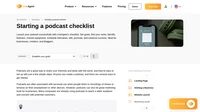Understanding your audience is not just a luxury; it’s a necessity. Customer segmentation serves as a powerful tool to tailor your marketing strategies effectively. By breaking down your customer base into manageable segments, you can engage with your target audience more meaningfully.
Customer segmentation allows businesses to identify groups of customers with similar characteristics and preferences. This insight can lead to improved marketing effectiveness and more robust customer experiences. Recognizing the various types of segmentation, from demographic to psychographic, enables marketers to craft strategies that resonate with different customer needs.
In this article, we will explore the importance and strategies of customer segmentation in marketing. We will uncover its benefits, discuss its application in both B2C and B2B scenarios, and highlight essential strategies while steering clear of common pitfalls.
Table of Contents
What is customer segmentation?
Customer segmentation is the practice of dividing a customer base into smaller groups based on shared characteristics such as demographics, behaviors, motivations, and spending habits. This method recognizes that different subsets of customers have unique requirements, priorities, and values.
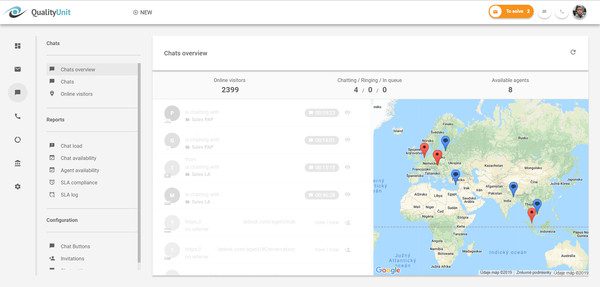
Using tools like LiveAgent can streamline handling customer segments, ensuring personalized support and satisfaction across your customer journey.
Why is customer segmentation important?
Customer segmentation is vital because it enables marketers to categorize customers based on shared characteristics. This categorization is important for developing targeted marketing strategies tailored to each segment’s unique needs. By doing so, businesses can create personalized experiences that resonate more deeply with specific groups, strengthening brand authority and increasing conversions.
Through segmentation, companies gain valuable insights into the behaviors of different buyer types. This understanding enhances communication strategies by allowing interaction on preferred marketing channels. Identifying frustrations and unmet needs within various segments can also improve customer retention and lifetime value. With these insights, marketers can tailor content to maximize advertising returns.
Benefits of Customer Segmentation
- Tailored content: Segmentation allows for the creation of marketing content that resonates with specific groups, enhancing advertising efforts.
- Enhanced engagement: By communicating on preferred channels, companies foster stronger connections, increasing customer engagement.
- Customer loyalty: Understanding and targeting the behaviors of satisfied users can lead to improved loyalty across the customer base.
- Better conversion rates: Personalized messaging through segmentation models increases campaign effectiveness and conversion rates.
- Trend identification: Regular analysis helps identify emerging behaviors, maintaining accurate and beneficial marketing strategies.
Enhancing marketing effectiveness
Customer segmentation helps improve marketing effectiveness by allowing the creation of specific strategies tailored to different groups. Targeting unique segments results in clearer, more engaging campaigns. Understanding customer needs enhances the overall experience, which increases satisfaction and loyalty. Utilizing segmentation models allows for personalizing marketing campaigns, making them relevant to distinct audience groups. This strategic marketing approach can directly address specific desires and pain points, fostering stronger customer loyalty.
Improving customer experience
By using segmentation, marketers can create targeted messages that resonate with specific customer groups, enhancing communication and engagement. Tailoring support channels and solutions to each segment’s challenges significantly boosts satisfaction and loyalty. Segmentation aids sales teams in identifying high-value segments, enabling efficient resource allocation to focus on promising potential customers. Understanding segment characteristics allows for more personalized marketing strategies, increasing conversions and retention. Creating well-defined segments refines buyer personas for better-targeted campaigns.
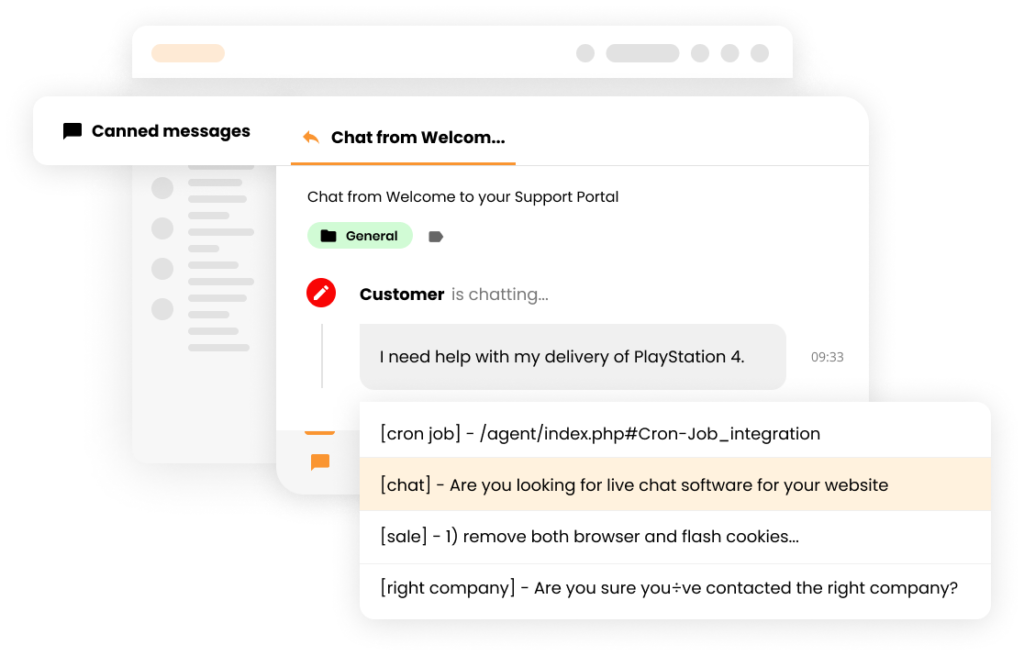
Increasing customer loyalty and retention
Regular review of customer segments helps businesses stay abreast of shifts and emerging trends, ensuring retention strategies remain effective. Learning from the behaviors of engaged, satisfied customers helps in developing strategies to encourage similar behaviors, boosting retention and loyalty. Personalized marketing, supported by segmentation, has shown to enhance retention, with significant numbers of businesses reporting improved results.
Customer segmentation is an indispensable tool for businesses aiming to enhance their marketing strategies, customer experiences, and loyalty efforts. Tools like LiveAgent can effectively streamline customer segment management, enabling businesses to offer the personalized support that increases satisfaction and retention across the customer journey.

Types of customer segmentation
Customer segmentation involves categorizing customers based on shared characteristics such as demographics, behaviors, motivations, or spending habits. This helps tailor marketing strategies more effectively. Several models of customer segmentation exist, including demographic, geographic, psychographic, technographic, behavioral, needs-based, and values-based approaches. These models help refine marketing tactics, making them more precise and impactful.
Demographic segmentation
Demographic segmentation categorizes potential customers based on key characteristics such as age, gender, income, education, occupation, and family size. Many businesses start their customer segmentation strategy here because it provides powerful insights into audience characteristics. In a B2B context, knowing a recipient’s job title is valuable for tailoring messages to their unique professional pain points. For B2C marketing, demographic information helps personalize offers based on factors like age and gender.
For example, a bookstore might advertise children’s books specifically to parents, enabling targeted promotional campaigns.
Psychographic segmentation
Psychographic segmentation divides audiences based on psychological characteristics. This includes attitudes, values, lifestyles, and interests, providing insights into consumer motivations and preferences. By employing psychographic characteristics, businesses create deeper insights into consumer behavior, which can enhance marketing strategies and product development.
Psychographic surveys are essential for gathering this data, revealing both purchasing behaviors and the motivations behind them. Creating customer segments based on psychographics allows brands to improve their messaging and customer experience by aligning them with consumers’ core values and interests. Businesses can craft targeted marketing content that resonates with specific audience traits, like adventurousness or social status.
Behavioral segmentation
Behavioral segmentation groups customers based on their actions, focusing on behaviors during interactions with a company or while completing purchases. By analyzing purchasing behavior, businesses can pinpoint customer habits, tendencies, and required steps for completing a purchase.
This model allows for creating personalized marketing efforts, such as automated emails triggered by specific customer actions, like downloading an ebook. Effective behavioral segmentation can uncover customer motivations and preferences, deepening relationships with leads and customers. By using behavioral insights, market segmentation can become more actionable, enhancing marketing effectiveness.
Geographic segmentation
Geographic segmentation categorizes customers based on their location, considering factors like country, region, city, postal code, and population density. This type allows for localization and personalization based on regional needs and preferences, making advertising more effective.
Geographic segmentation is particularly useful for local businesses. It enables targeted advertising efforts that resonate with specific communities, using tools like U.S. zip codes. Marketers can identify unique tastes and needs by examining geographic segmentation, as seen in McDonald’s offering region-specific menu items. Data for this segmentation can be collected through customer surveys, market research, or tracking website visitors’ IP addresses.
Boost growth with smart customer segmentation
Understand your audience better by grouping customers based on their needs and behaviors. Create personalized experiences that drive engagement and conversions.
Customer segmentation in B2C vs B2B
Customer segmentation is a strategy used by businesses to divide their customer base into distinct groups. These groups, or segments, share common characteristics, making it easier to tailor marketing strategies to meet their specific needs. This helps in driving sales and enhancing customer loyalty. While the concept is broadly applicable, its implementation in B2C (Business to Consumer) and B2B (Business to Business) markets can differ significantly.
In B2C marketing, businesses often segment customers by geographic location. This helps them align offers with regional events and preferences. For instance, a company may offer products that cater to the cultural festivities of a particular area. Language is another crucial factor – businesses may need to adjust their marketing efforts based on the languages spoken within a region.
For B2B segmentation, companies often adopt vertical approaches. They might focus on specific industries or job titles that are most likely to find their products appealing. Customizing services for different B2B segments, such as financial services versus healthcare, can lead to increased adoption and satisfaction. Both B2C and B2B rely heavily on understanding customer demographics and behavioral traits. This helps identify segments with the highest potential for sales.
Unique challenges in B2C segmentation
B2C segmentation comes with unique challenges. One of these is demographic segmentation, where businesses tailor offers based on factors like age, gender, and interests. This approach facilitates personalized marketing strategies that resonate with individual consumers.
Geographic segmentation is essential for B2C companies as well. It enables them to design targeted marketing campaigns. These campaigns consider the local climate and customs, influencing product demand. For example, a company may advertise winter clothing in colder regions while focusing on summer attire in warmer areas.
Psychographic segmentation in B2C involves adapting messaging to suit different customer bases. It includes considering factors like the preferred language and style. Understanding these elements allows marketers to create more relatable and effective communication.
Technographic segmentation is another challenge. It emphasizes the need to understand consumer behaviors related to the technology they use for purchasing. This can vary significantly among different groups, necessitating tailored strategies.
Needs-based segmentation is crucial as well. It allows businesses to identify and address the emotional and practical needs driving customer purchasing behaviors.
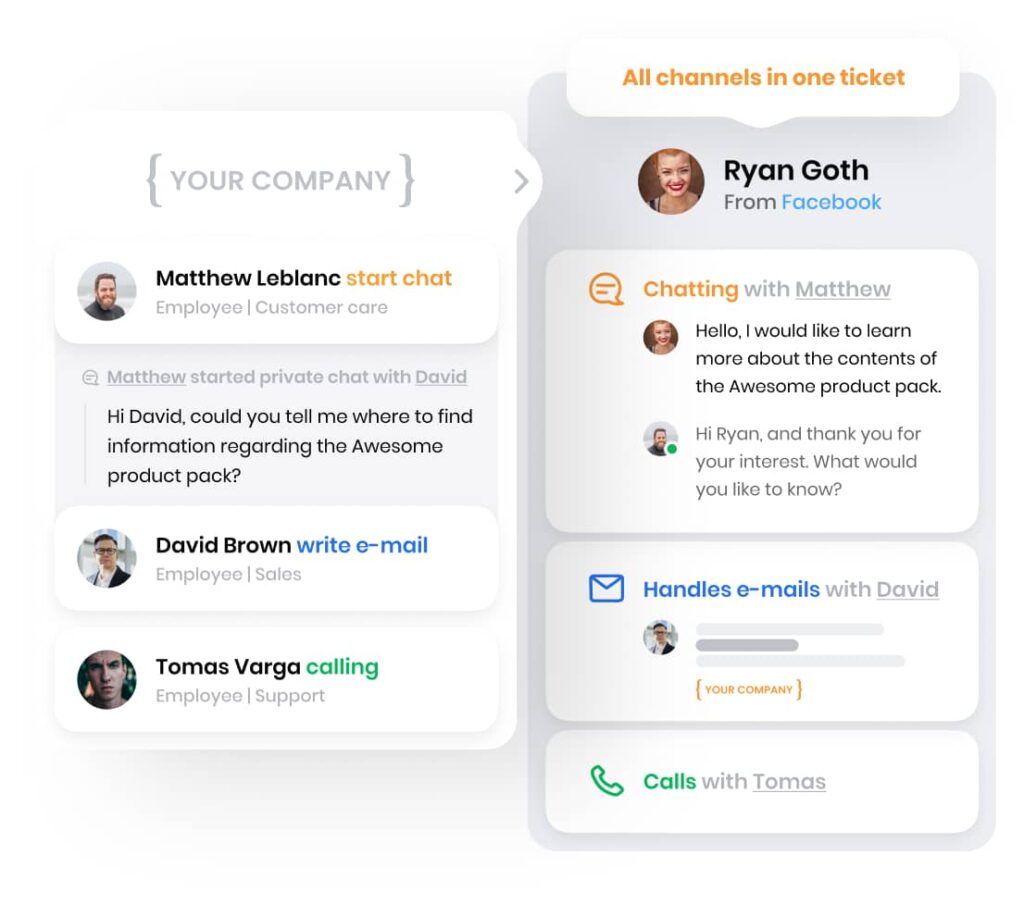
Key strategies for implementing customer segmentation
Customer segmentation is crucial for businesses wanting to achieve success in their marketing efforts. By grouping users into segments based on common traits, businesses can launch targeted campaigns that truly meet specific needs. This practice allows companies to understand their customer base better and identify profit potential within various groups. By fine-tuning sales and marketing budgets, they can focus on high-impact areas.
A strong customer segmentation strategy starts with setting goals informed by market research. By focusing on behaviors such as purchasing patterns and engagement, businesses can craft personalized user journeys and align their campaigns with objectives and KPIs. Through analyzing customer journeys and behaviors, organizations can create meaningful segments that lead to strategic improvements in both product offerings and customer experiences. For handling these tasks efficiently, utilizing a tool like LiveAgent could be beneficial, as it helps tailor customer service approaches suites to individual segments.
Conducting market research
Conducting thorough preliminary research is the backbone of effective market segmentation. Surveys, focus groups, and polls are pivotal in understanding market segments and tailoring marketing strategies effectively. By using both quantitative and qualitative research methods, brands gather diverse insights into customer preferences and behaviors.
Analyzing the responses from this research helps identify the most relevant customer segments, establishing a foundation for targeted marketing efforts. Testing these strategies with conversion tracking evaluates campaign effectiveness, allowing adjustments as necessary. Market segmentation empowers businesses to connect with potential customers by identifying their characteristics and needs, ensuring marketing efforts are well-tailored and effective.
Using Data Analytics Tools
Data analytics tools are invaluable in today’s market for executing robust customer segmentation. Tools like Google Analytics provide a wealth of demographic data about customer engagement on websites. Advanced analytics offer insights into customer behaviors, enabling brands to customize messages and offerings according to preferences, purchasing patterns, and past campaign responses.
Integrating both downstream and upstream customer data into analytics enables businesses to form a continuous view of customer needs and preferences. Customer Data Platforms (CDPs), like Twilio Engage, translate these insights into actionable marketing strategies, enhancing targeting and campaign effectiveness. Effective customer segmentation strategies use data analytics and machine learning to group customers by behaviors, preferences, and lifetime value. LiveAgent can also be a key resource in analyzing customer interactions and tailoring service experiences according to segmented groups.
Developing Customer Personas
Creating customer personas is an essential step in understanding and targeting specific market segments. These personas are detailed profiles that include interests, traits, behaviors, motivations, and pain points. Businesses use data from market research to craft these personas, often giving them names and descriptions to make them relatable.
By developing customer personas, marketers can refine their understanding of how different customers interact with their products or services. Integrating these personas into marketing strategies allows for designing personalized and relevant messages that resonate with diverse audience segments. By improving marketing efficacy, businesses can achieve better retention and engagement within targeted customer segments.
Tailoring Marketing Messages
Tailoring marketing messages through customer segmentation enables companies to create communications that deeply resonate with specific customer groups. This practice enhances engagement and overall campaign effectiveness. Clarity from segmentation helps design compelling messages that address particular needs and interests.
Personalizing these messages not only resonates with customers but also includes special offers that encourage more purchases, leading to precise and relevant offerings. Effective segmentation further boosts customer service by ensuring communication feels personalized, fostering greater customer loyalty and retention. By using strategic communication channels based on customer segments, businesses can deliver marketing messages through the most effective mediums, optimizing reach and impact. LiveAgent excels at providing personalized service interactions, making it a valuable tool in crafting tailored marketing messages and responses.
Common pitfalls to avoid in customer segmentation
Using incorrect or outdated data is a frequent problem. Accurate and current data is vital to truly understand customer preferences and needs. Segmentation based on assumptions rather than data can also mislead marketing efforts. Therefore, it’s wise to conduct small tests and research beforehand. This approach helps build reliable data for effective segments. Moreover, segments must be accessible. If you can’t reach them through your marketing, the strategy won’t work as intended.
Over-segmentation vs. under-segmentation
Finding the right balance in segmentation is key. Over-segmentation makes managing customer groups difficult, complicating marketing efforts. On the other hand, under-segmentation can lead to generic marketing that doesn’t meet diverse customer needs. Both extremes reduce marketing effectiveness.
Using data analytics and machine learning can prevent these issues. These tools offer a more precise view of customer behaviors and preferences. Identifying two to four core segments often targets the most convertible customers. Cluster-based segmentation can also help group customers efficiently, maintaining meaningful distinctions without overwhelming complexity.
Ignoring customer feedback
Ignoring customer feedback diminishes understanding their needs, affecting segmentation effectiveness. Feedback helps identify potential products and services that address evolving demands across segments. When customers feel unheard, their loyalty decreases, impacting CLV and revenue. Without insights from feedback, marketers might stick to broad categories that miss detailed behavioral patterns. An effective strategy requires incorporating customer feedback, enabling accurate targeting and enhancing engagement.
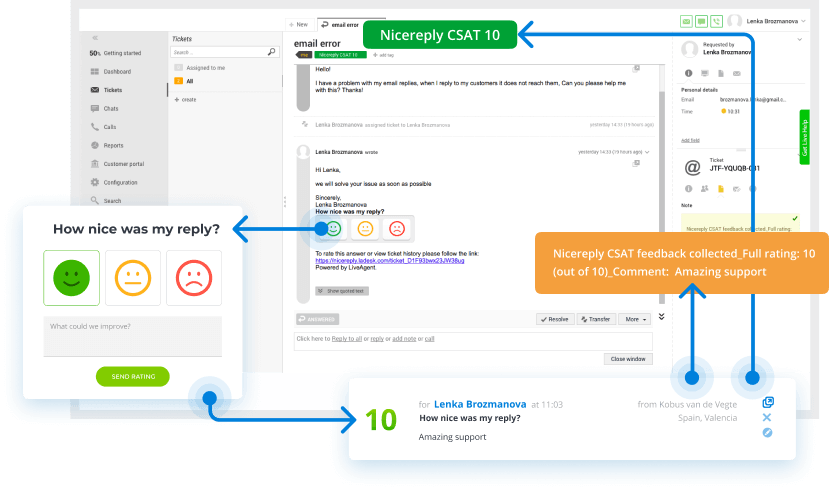
Failing to adapt segments over time
Adapting segments is necessary as consumer preferences evolve. Stale segments lead to outdated strategies that miss changing needs. Implementing feedback loops between segmentation models and campaign results is crucial for continuous improvement. As big data and analytics advance, regular updates to customer segments are important. A benefits-based approach ensures relevance to high-value segments. Regular refinement helps spot loyal, high-value customers and opens avenues for better product offerings. Without this, organizations risk losing their competitive edge.
Effective customer segmentation requires a precise balance, constant updating, and robust data usage. Tools like LiveAgent can be incredibly beneficial for managing customer interactions and improving segmentation strategies. It helps businesses stay connected, update customer data efficiently, and utilize insights for better segmentation and customer service.
Boost growth with smart customer segmentation
Understand your audience better by grouping customers based on their needs and behaviors. Create personalized experiences that drive engagement and conversions.
Conclusion
Customer segmentation is a crucial practice for any marketing strategy. By dividing your customer base into smaller groups with shared characteristics, such as demographics or behaviors, you can target your marketing efforts more effectively. This approach enhances the customer experience by delivering personalized communications and offerings.
Utilizing accurate buyer personas, derived from segmentation, ensures your marketing aligns with the real needs and preferences of potential customers. Engaging with these tailored groups increases customer loyalty and the success of your interactions.
Businesses can employ tools such as Shopify’s native customer segmentation features to analyze data and develop customized campaigns effortlessly. This paves the way for more focused marketing efforts and boosts customer satisfaction.
If you’re looking to enhance your customer engagement further, consider trying LiveAgent’s 30-day free trial. LiveAgent offers robust solutions for customer support, helping you understand and meet your customer needs more effectively. Their platform simplifies managing customer interactions, providing a seamless customer journey.
By investing in robust customer segmentation strategies and tools, you can take your marketing efforts to the next level, improving both engagement and customer satisfaction.
Frequently Asked Questions
How are customers segmented?
Customers are segmented by geographic, demographic, psychographic, behavioral, and other characteristics.
What are the steps in market segmentation?
The first step is to collect and analyze customer data. The second is to determine the right criteria for customer segmentation. Next, select the most attractive segments. The final step is to develop unique marketing strategies for each segment.
Why segment customers?
The benefits of customer segmentation include; better marketing campaigns, the ability to expand, customer retention, price optimization, and increased revenue.

 Български
Български  Čeština
Čeština  Dansk
Dansk  Deutsch
Deutsch  Eesti
Eesti  Español
Español  Français
Français  Ελληνικα
Ελληνικα  Hrvatski
Hrvatski  Italiano
Italiano  Latviešu
Latviešu  Lietuviškai
Lietuviškai  Magyar
Magyar  Nederlands
Nederlands  Norsk bokmål
Norsk bokmål  Polski
Polski  Română
Română  Русский
Русский  Slovenčina
Slovenčina  Slovenščina
Slovenščina  简体中文
简体中文  Tagalog
Tagalog  Tiếng Việt
Tiếng Việt  العربية
العربية  Português
Português 

